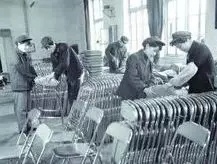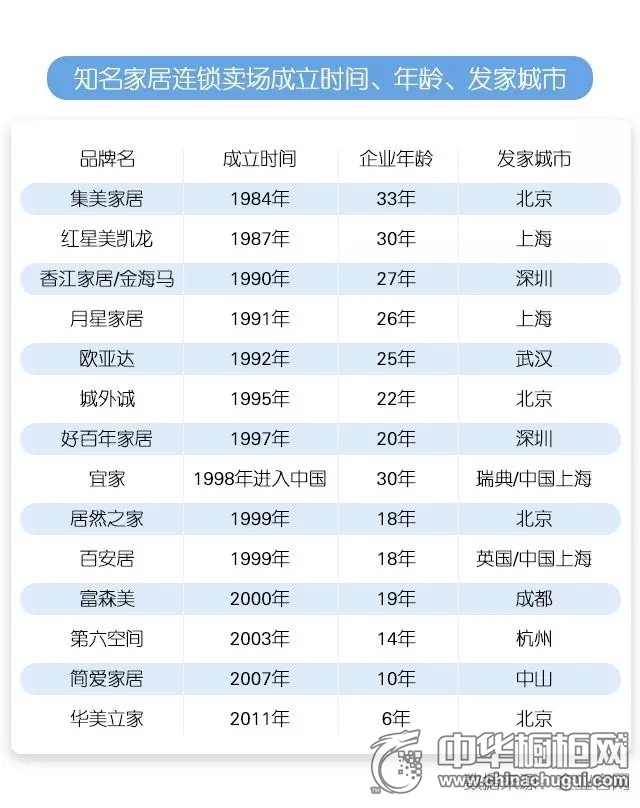This year marks the 40th anniversary of the reform and opening up. In the past 40 years, the bench has become a comfortable and fashionable sofa. The floor of the cement has also been decorated with ceramic tiles and wooden floors. The awards and calendars on the wall are also decorated with various colors and patterns. Replaced by wallpaper and wall coverings. People's lives are full of disappearances and changes, and memories of generation after generation are constantly refreshing. But as the money in the pocket increases, it's not just furniture, but furniture. Today, let's review the stories related to "how to spend money."
70's: It's hard to buy furniture tickets
Beginning with the use of food stamps nationwide in November 1955, this special pass became an indelible memory of that era. In addition to well-known food stamps, stamps, and meat tickets, in fact, furniture purchases were also required at the time.

In the 1970s, most citizens had a strong sense of furniture consumption, but most of the furniture supplied by carpenters was far from being able to meet the demand. Therefore, the purchase of furniture began to be provided with a voucher. The earliest purchase of furniture tickets was the “Luoyang City Purchase Voucher†issued in 1975. According to the regulations at the time, the three doors of the large cabinet (1.7-1.8 m), each purchase of 5 coupons; two doors, each receiving 2 points; small cabinets (1.3-1.6 meters) each purchase coupons 1 point; double bed board, 1 point for each purchase coupon, 10 sheets for each sheet, 0.5 points for each sheet.
Furniture tickets are uniformly planned by the city government, so these furniture can be bought without money. For the little couple who were catching up with the marriage at the time, getting a furniture ticket was the most timely gift.
80's: buying furniture at a trade fair
In the 1980s, furniture production introduced machines and assembly lines, and the efficiency was greatly improved, eliminating the need for a ticket supply. Since the Beijing Furniture Company opened a trade fair in Hufang Bridge, the furniture fair has become a novel way of buying and selling furniture. At that time, large-scale home stores were still relatively lacking, and the rental costs of department stores were too high, and the fairs became the best channel.

"Combined furniture sofa bed, black and white TV in the center. Three brick houses in the cement floor, rent a truck to pick up the bride." With the fair, the popular ones are high-quality, uniform specifications, easy to disassemble, and versatile panel furniture. At that time, it led the trend of the whole industry.
90s: Fixed outlets are popular, 365 days to experience
From 1990 to 2000, Chinese home stores ushered in gold for 10 years. In 1994, the housing distribution system was abolished and the country began to promote the privatization of Chinese housing. Commercial housing has become a hot commodity for a time, and the furniture market has been blown out.
At the same time, due to the reform and opening up in the 1990s, the national income has increased substantially, and the brand awareness of the Chinese people has begun to awaken. Furniture brands and styles have gradually enriched, and the large-scale home store model has begun to rise. During the period, home stores have experienced the evolution of “big-selling stores†to “shop-in-shopsâ€. In the 1980s, in the early days of the reform, Jimei and Red Star Macalline were the two big ones. In the 1990s, a number of home stores such as Home, Xiangjiang Home, Ouyada, Chengwaicheng, and Hundred Years were concentrated.
At the same time, Qumei opened a concept store in 1997 to create a sales model for China's “home-independent storeâ€. Since then, the brand chain has become a new channel for furniture retail. In August 1995, Meike Industrial Co., Ltd. also jointly invested with Taisheng Group Holdings to establish Meike International Furniture Manufacturing Co., Ltd., which opened a Chinese furniture brand store for export. The establishment of independent brand stores indicates that the purchasing power of Chinese people is gradually increasing, and people who are “first rich†begin to talk about “lifeâ€.

Not only domestic domestic stores and brand stores have blossomed, but foreign brands IKEA and B&Q also targeted China in the 1990s and completed the store. At that time, Shanghai, as the first batch of economic open areas in China, was favored by home stores.
In the 1990s, many multinational companies rushed into China's huge consumer market, but they were dissatisfied with the situation, and they ended up in layoffs, contraction, and even withdrawal from China. This is also the epitome of the tremendous changes in the Chinese market over the past decade: in the 1990s, there was a certain gap between China's home furnishing stores and foreign countries. The entry of foreign brands has a strong advantage; especially IKEA, which has revolutionized the lives of Chinese people in the form of self-help and model. the way. But as consumers become more and more critical about furniture, foreign brands are facing more and more challenges in China. B&Q has transformed its smart stores in time to attract more traffic with experience. In the absence of the unfavorable Home Depot, it was announced in 2012 that “all stores in China will be closed and the entire market will be withdrawn from the Chinese marketâ€.
00s: Home stores become the main channel
Home furnishing during this period became the main channel for buying furniture. According to incomplete statistics, in 2004, there were more than 2,500 furniture circulation places in China with over 5,000 square meters, more than 900 in 10,000 square meters, more than 500 in 20,000 square meters, more than 100 in 30,000 square meters, and 30 in more than 50,000 square meters. A lot. In addition, there are furniture street in Lecong, Shunde, Guangdong, and 2 million square meters in Longjiang, and nearly 200,000 square meters of furniture in Dongguan Houjie. These malls are mostly sold by dealers or manufacturers, and independent stores still exist in an auxiliary form.

Not only is the national home furnishing brand everywhere, but the home store is also represented by the home of the home, Red Star Macalline, and enters a period of rapid expansion. Red Star Macalline has built a chain brand market since 1998 with reference to the chain model. The actual home also opened a second branch in 2003, and the opening of the Shilihe store took the pace of the chain development of the home system. The form of the chain store broke through the scale of the single store, which made the store brand have the possibility of gradually moving toward the country at the beginning of the 21st century.
It is worth mentioning that during this period, the home store has chosen the same service to enhance its competitiveness. Actually, in March 2000, the company advocated “first paying†in the industry. In 2000, Red Star Macalline launched the service of “all goods sold, and full responsibility of Red Star Macallineâ€. The home store began to go from the background of the venue rental to the front desk of the direct service customer.
10's: online and offline
In the 10th century, it was no longer a channel for consumers to accept, but an era of channel competition. Under the stimulation of new technologies such as the Internet and new retail, where to buy is no longer the focus of attention, consumption is becoming more rational, and returning to product quality and service experience.

In the past two years, experiential big stores, home malls, and new retails have emerged one after another. In March 2018, Meike Home's Wanping Brand Pavilion in Chengdu provided personalized customization services through a rich product format. In 2016, Qumei You + Life Hall opened, from home scene layout to experiential consumption mode, it has now become one of the most talked about “lifestyle†brands in the home industry! There is also a 1:1 real scene of Rouran wallpaper. The home, the home-based home experience hall of the European-style home, and the home MALL of the Red Star Macalline, and then to the home of the home through the supermarket, theater, children's park, etc. to build a more and more grounded life scene. Many home furnishing companies are beginning to change their models. From sales to service, from selling products to sales experience and lifestyle, this is the result of the extension of the brand product chain, as well as the service upgrade and brand image.
At the same time, “new online and offline retail†on the channel has become the key word for everyone in the home. The particularity of the furniture industry lies in the fact that furniture products are resistant to consumer goods and are expensive. Without the experience and inspection on the ground, it is difficult for consumers to make a decision to purchase. In the era of “new retail†competition, on the one hand, e-commerce companies are fully deployed through physical retail channels; on the other hand, with the full explosion of new retail energy, traditional retail companies are leveraging the Internet and artificial intelligence. In-depth integration of online and offline. On June 18 this year, Red Star Macalline and Real Home's "618 Years of Promotion" all chose the new retail, and the home and Tmall cooperated to build a data center, which sold 1.1 billion in three days; Meikailong uses a full-time, full-time, omni-channel digital marketing tool and operating system to dig deep into the flow, with 3 days of sales breaking 3.5 billion. In this kind of traffic and retail competition, we can see that furniture companies are no longer passive, and by constructing a complete new retail ecosystem, the user's thinking is achieved to the extreme.
The change in consumer demand is the driving force behind the changes in the purchase channel. Nowadays, it has also become a store. The best time for companies to explore various modes. The change in the purchase channel of furniture is the process of step by step activity in the Chinese market and the step-by-step upgrade of consumers. The 40 years of reform and opening up is also the golden 40 years of the furniture industry. It highlights the vitality of the industry in the diversification of products, brands and channels. At present, although the home building materials store is still the most important channel for consumers to purchase at present, with the diversification of channels such as hardcover rooms, Internet home improvement, e-commerce, dealers and designers, the way for consumers to obtain furniture in the future is also Will be more and more dispersed.
1. The “Luoyang City Purchase Voucher†issued in 1975 is the earliest furniture ticket according to statistics.
2. In 1980, “the housing was to be commercialized†and the reform of the Chinese housing system was officially launched.
3. In 1987, Qumei was established. In 1997, Qumei built a brand concept store, and in 2016, the store upgraded you + living hall.
4. In 1993, Red Star Macalline began to lease the factory to operate the furniture market. On December 31, 2017, Red Star Macalline operated 256 stores nationwide.
5. In 1995, Meike Furniture, an export-oriented furniture manufacturer, was established. In 2015, Meike Home completely shut down OEM OEM.
6. IKEA entered China in 1998. The preferred city is Shanghai.
7. In August 1999, the company was established. The first store opened in the North Fourth Ring Store. In May 2018, the actual store signed a store that broke 400.
8. In 2006, China's furniture exports amounted to approximately US$17 billion, making it the world's largest exporter.
9, my country installed the first stock - East Yi Risheng listed, is in 2014, Shenzhen A shares.
10. In 2012, Home Depot announced that it would close all its stores and withdraw from the Chinese market.
11. In 2014, the environmental protection policy was supercharged year by year, and the home enterprises suffered the most severe transformation.
12. In 2016, Milan International Furniture Fair debuted in Shanghai.
13. In October 2016, Ali first proposed new retail, and then swept the furniture industry online and offline.
14. The year in which the custom furniture company went crazy was listed in 2017.
15. The "A+H" stocks are listed on the Red Star Macalline.
Hydraulic Stretcher,Medical Hydraulic Stretcher,Hospital Hydraulic Stretcher,Hydraulic Ambulance Stretcher
Jiangmen Jia Mei Medical Products Co.,Ltd. , https://www.jmmedicalsupplier.com